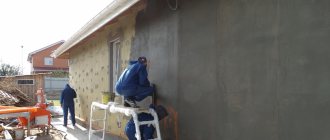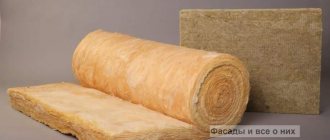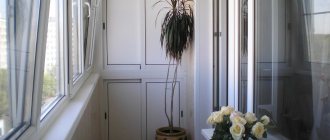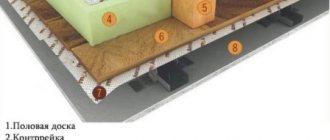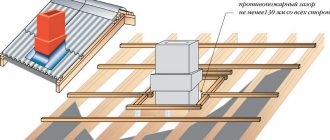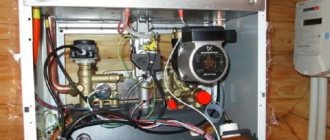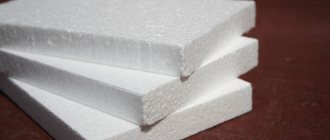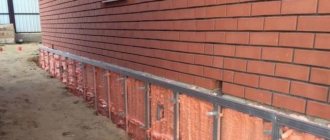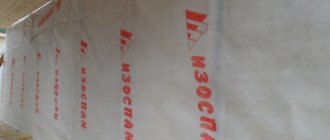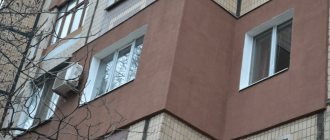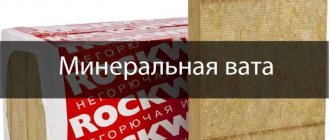Insulating the outside of the walls allows you to retain heat inside the room. It is performed at the stage of construction or reconstruction of a building. Modern technology for facade insulation is carried out in two ways. A ventilated façade is a durable frame along the wall, which is filled with heat-insulating material and lined with porcelain stoneware or composite cassettes on the outside. And the second insulation system “wet facade” consists of insulation, reinforcing mesh, primer and requires final plastering.
The work is carried out using water, which is why the epithet “wet” arose. The advantage is that the construction of an expensive frame is not required, and the necessary materials are attached directly to the wall. They are then covered with a beautiful finishing layer.
How to choose materials for wet wall insulation
The raw materials used in the work must have a certain level of water absorption,
frost resistance, vapor permeability and thermal expansion.
The insulation layer for a wet facade can be basalt (stone wool slabs) or polystyrene foam. Plates made of basalt wool with a density of 150 kg/m3. and a strength threshold of at least 15 kPa, are recommended for finishing the facade of a house.
Glass wool is not used as insulation for the plaster system, because the structure of the material is not intended for high loads.
Insulating facades with extruded polystyrene foam is no longer popular because it is more difficult to attach due to weak adhesion to construction adhesive. In addition, this material “does not breathe”, prevents the free conversion of air and steam, smolders in a fire, releasing toxic substances.
It is allowed to insulate the walls of a house with polystyrene foam only of façade grades that meet fire safety requirements. Additionally, for the same purpose, cuts are made from mineral wool.
When insulating a log house with penoplex, the protruding joint of the logs is not removed, because cut crowns will cause the corners of the house to freeze.
The choice of material depends on the thickness of the wall and its composition, on the climatic zone where construction work is carried out, and on the layer of interior finishing.
The most popular facade insulation for plaster
The most common types of facade insulation are:
Expanded polystyrene (foam)
The material is the leader among insulation materials, since it is the cheapest, retains heat best and practically does not load the walls. We recommend reading about insulation with polystyrene foam and polystyrene foam under plaster in more detail.
The disadvantage of polystyrene foam is low vapor permeability , which has to be compensated by creating effective ventilation inside the house to remove steam.
Minvata
In particular - basalt (stone) mineral wool. The best option is slab mineral wool, which has sufficient rigidity for ease of installation.
This material has good thermal insulation properties, high vapor permeability, and is practically the optimal option for external insulation .
At the same time, mineral wool has the ability to absorb water, so for high-quality functioning of the insulation, a layer of external waterproofing is required (usually it is recommended to install a waterproofing membrane that releases steam to the outside, but does not allow any moisture to enter).
Ecowool
Produced from cellulose waste. It has a low price, but is an organic material , which contributes to the manifestation of various biological manifestations - rotting, mold, etc.
In addition, ecowool is applied using special equipment, which sharply reduces its use as insulation for walls.
Polyurethane foam
Liquid polyurethane foam is used, installed using special spraying units. The procedure is quite complex and requires the involvement of specialists. Additionally, polyurethane foam is virtually impermeable to vapor, reducing its value for outdoor use.
At the same time, the thermal insulation qualities of the material are very high, the application on the walls is very dense, without gaps, cracks, etc. The cost of the material is high, which is an additional limitation.
Penoplex, EPPS
The material is a type of foam, but the production technology is different. With excellent thermal insulation and waterproofing properties, the material has zero vapor permeability, which makes its use somewhat limited due to the need to organize ventilation methods for removing steam from the room.
Excellent for insulating basements and submerged parts of a building.
Penoizol
Penoizol is also a modification of polystyrene foam. It has excellent thermal insulation qualities, a very light material that does not create any load on the walls.
The disadvantage is the need for application using special equipment. In addition, a significant disadvantage is some shrinkage during hardening, which may result in loose spots, cracks or gaps.
There are a lot of types of insulation; this list deliberately does not include organic compounds, since they are a favorable environment for insects, rodents, mold or mildew appears on them, etc. All these factors sharply reduce the performance qualities of materials, which makes them undesirable for use in residential premises.
How to fix insulation boards
The insulation is glued to the previously prepared wall surface. The glue is carefully applied
perimeter of the material. This method reduces the consumption of adhesive and ensures the required fastening strength. During work, make sure that the glue covers at least 40% of the insulation area.
After drying for 3 days, the thermal insulation layer is additionally fixed with dowels. The fasteners enter 5-9 cm into the wall, depending on the volume and number of pores. The insulation must be secured with a dowel with a wide head. The dowel cap should be made of polyurethane foam so that wet spots do not appear on the facade.
Stains on the facade appear when using a dowel with a metal head.
Because the metal freezes at the base of the outer surface, and warm air leaves the house, condensation appears. As condensation appears on the surface, it forms a wet spot. Therefore, a dowel with a plastic head is used for façade plastering systems.
To ensure the quality of thermal insulation, it is recommended to follow a number of rules:
- continuous longitudinal joints cannot be formed between several rows;
- the seams of adjacent slabs must overlap;
- the inner side of the slab is pressed against the base of the wall, and the edge of the insulation is pressed against the edge of the adjacent slab;
- Any glue protruding between the seams must be removed immediately with a rag.
Types of plaster
When you visit a large building materials store, you can see different types of plaster. But the two most common types are mineral and acrylic. Which option should you prefer?
Acrylic plaster contains acrylic resin and sand. Its cost is higher, but it has better ductility, can withstand mechanical loads without harm, lasts up to a quarter of a century and is not afraid of high humidity.
Mineral plaster also has certain advantages. It contains sand and cement, which ensures complete environmental friendliness of the material. At the same time, it can boast excellent vapor permeability and resistance to ultraviolet radiation. In addition, the cost of mineral plaster is lower than acrylic, which often becomes a decisive argument in its favor.
Knowing the main advantages of these materials, every person who decides to install thermal insulation on the facade of a house followed by plastering will be able to choose the option that completely suits him.
Installation of the plaster layer
First, the reinforcing mesh is installed. Before work, cover doors and windows with film to protect them from damage. It is necessary to make sure that all hooks are installed at an angle of 30°, no less. It is recommended to stretch the mesh in vertical sections equal to the width of the roll, which is unrolled from top to bottom. The overlap of stripe on stripe must be at least 50 mm.
The mesh is secured with a locking pin. Can be secured by installing two fixing plates on top of each hook. The plates must not be pressed in so that the thermal insulation of the facade does not deform, which is especially dangerous for gas-filled plastic called polyurethane foam. Plastic spacers are attached between the mesh and the insulation surface so that the mesh becomes part of the first layer of plaster.
Base plaster layer
The first layer, reinforced with mesh, will replace the frame on which the entire wet facade insulation system will be supported. The solution consumption is 15–20 kg/sq.m., the dry mixture is mixed according to the manufacturer’s requirements. The solution is applied with a special pump or spatula, periodically pressing the mesh to the inner layer.
If the mesh is deformed in some places and comes out of the solution with bulges, you need to correct the mistake and fix the problem area with a special nail. To reduce such accidents, it is better to apply the solution from the bottom up. The thickness of the first layer should be the same over the entire surface of the wall.
After applying the base plaster layer, it is recommended to maintain optimal humidity on the wall surface. In dry weather and high air temperatures, the plastered area will have to be moistened.
Choice of insulation
Expanded polystyrene is afraid of ultraviolet rays, so it must be plastered immediately after installation.
The material is sorted taking into account cost, durability, and insulating qualities.
The type of external wall is taken into account:
- for fences with low thermal conductivity (gas silicate, aerated concrete), mineral wool mats are used;
- porous walls (wood, coarse slag or expanded clay concrete) must be insulated with insulation that allows air to pass through, for example, fiberglass with hydrophobic impregnations;
- For brick and concrete, a layer of foamed polymers is used.
The thickness of the layer depends on the type of material; this parameter affects the reduction in the cost of insulating the building.
Expanded polystyrene
Mineral wool slabs are dense, so they hold the layer of decorative coating well.
Lightweight slabs are water resistant, do not get wet when exposed to moisture and maintain their integrity. The insulation layer does not allow steam to pass through and is characterized by increased density. Penoplex contains fire retardant flame retardants, so it self-extinguishes in case of fire.
Negative qualities include:
- release of harmful components when heated;
- destruction under the influence of the sun;
- damage from contact with bitumen and similar substances.
Extruded polystyrene foam, which is of high quality, works effectively for insulation.
Mineral wool
Rolled materials have a soft structure, so the plaster will not adhere to them.
Thermal insulation under plaster made of mineral fibers lasts for a long time. The mats have different fiber structures and are resistant to heat and chemicals.
The material is available in 3 types:
- glass wool - made from molten glass;
- stone wool is produced by melting sedimentary rocks;
- slag wool – melt of blast furnace residues.
The vapor-permeable layer repels moisture well if the composition contains hydrophobic additives. The material is an environmentally friendly type. For convenience, it is produced in two layers with a dense outer and loose inner surface.
How to apply a leveling layer
To ensure that the facade plaster on the insulation has a beautiful appearance, apply the following ball of plaster
mixtures. The task is to remove defects of the working surface and prepare it for flawless application of the finishing coating. The solution consumption is 15–20 kg/sq.m. First, moisten the work surface generously. The second layer can also be applied with a powerful pump or an ordinary spatula, provided that physical effort must be made.
The thickness of the ball is formed to be about 10–12 mm, taking into account that the entire three-layer system will take at least 25 mm. The marks on the beacons serve as a guide for leveling the applied solution. The excess is collected in a container and can be used for further finishing work. In summer, it is also recommended to moisturize the second layer.
Grinding and expansion joints
Grinding is done after the solution has moderately hardened. After applying the leveling layer, several hours pass depending on the weather. The tool is a construction float coated with polyurethane.
After hardening, the structure is cut through to form longitudinal and transverse seams. The expansion joint serves to reduce the load on structural elements in areas prone to damage. Danger may arise from an earthquake, ground settlement, or other natural and physical impacts on the structure. The cuts are made with a special tool, dividing the wall into conditional blocks that give the building elasticity. The seams are filled with insulating material, for example, mastic.
The width of the seam is 6 mm, and the distance between the cuts made is no more than 15 m. The extreme seam, going from top to bottom, is made no closer than 150 mm from the corner of the house. The cutting disc must cut through all layers, including the mesh.
How to apply a decorative layer
The installation of a wet facade, applied over insulation, ends with a top layer, which
performs a protective function from rain and wind, while at the same time being a design solution.
To form the top layer of plaster over the insulation sheathing, mineral mixtures are used; they are characterized by high air permeability.
Before applying the solution, you need to check whether the previous ball has dried well. It should take 5 days from the day the leveling layer is applied.
Before applying the solution, approximately 12 hours before, for example, overnight, the surface is thoroughly treated with a tinting primer.
Decorative plaster is applied in a thin layer and rubbed in a circular motion. The entire process is performed with the same grater. Bark beetle plaster can be acrylic or gypsum, depending on the method of application. The gypsum-based mixture is easier to apply and is recommended for home use. Acrylic solution requires certain work skills and application experience, so it is often used by specialists.
How to check quality
There are a number of tips that will help determine whether the work on installing thermal insulation is progressing correctly:
- At the preparatory stage, the walls are cleaned of dirt, previous coatings, and stains.
- Without deviating from the instructions, work is carried out with the adhesive composition.
- The insulation boards are fixed evenly.
- There is no unevenness at the joints between slabs or blocks.
- The dowels do not stick out above the insulation.
- The reinforcing mesh is laid in the base layer of plaster.
- Breathable materials are used, the plaster “breathes”.
- From the drains and from the roof, water will not get onto the façade finishing.
- There are no bulges on the surface of the wall, the façade is not covered with bumps.
- There are no cracks on the wall, in the corners of window and door openings.
Installing thermal insulation at home increases the lifespan of the building, significantly improves living conditions and reduces the cost of annual heating costs for the building in winter. It also protects walls from exposure to weather conditions, fungus and shock-absorbing destruction. Under sustained conditions and proper care, good thermal insulation of the external wall of a building can last 25 years.
Similar articles
- Fur coat facade
Facade
plaster
fur coat is the optimal solution for cladding a house.
...
Universal technology
for plastering
facades
using insulation
. Read more - Insulation for exterior walls of a house under plaster
Heat conservation is an important task for residents of private houses in most regions of Russia. Read more
- Bark beetle plaster on the facade
Bark beetle
plaster on the facade.
If, when finishing a building, it is necessary to preserve ...
of insulation
was previously fixed to the wall , it is necessary... Read more - Features of using façade plaster…
Features of using façade
plaster on
polystyrene foam.
...
This porous lightweight material is used as
insulation
under
plaster
for... Read more - Facade plaster: features and types
In addition, such
plasters
cannot be applied to all types of exterior finishes.
If polymer insulation
and surfaces are used... Read more - Facade plastering technology
To decide on
insulation
for
plaster
, read the article.
...
Facade
plaster on
aerated concrete. Read more
How to plaster insulation, selection of composition, its characteristics
When insulating using the “wet facade” system, a plaster layer is applied on top of the insulation, which protects the insulation and at the same time serves as a façade finish. Let's take a closer look at what plasters are used for insulated facades and what their features are.
The wet façade system is also called “bonded façade thermal insulation system”, or “light wet insulation”. These terms may be found on plasters packaging and determine their scope of application, so you need to pay attention to them. Basically, thin-layer plasters are used on top of the insulation.
They differ in that the base contains grains of light filler of the same size, usually from 0.5 mm to 6 mm in diameter. The size (caliber) of the grain determines the minimum thickness of the layer of this plaster. Its base can consist of various substances. Hence the wide variety of properties of plasters for facades, and in particular for the insulation layer.
Distinctive features of thin-layer plasters
Thin-layer plasters can vary significantly in their properties, however, it is possible to identify what they have in common.
- Thin-layer plasters have bright colors and excellent decorative properties, and are well suited for finishing and decorating facades. They are used not only on top of insulation, but also as a covering for rough and durable mineral plasters.
- Basically, they have increased vapor permeability; plasters can be used on top of vapor-permeable insulation layers.
- The layer thickness is often small, maximum 4 cm.
Vapor permeability is a key characteristic for plaster, which is applied on top of the insulation layer. The finishing surface layer should not have more resistance to steam movement than other layers of the wall, otherwise the wall will get wet in cold weather. The greater the vapor permeability, the better.
One of the manufacturers suggests using their plasters and other compounds when insulating a “wet facade” according to the following scheme
Cement-based façade compositions
The plaster is based on white cement. Common additives are fiber to impart bonding, plasticizers, hydrophobes for moisture resistance. A distinctive feature is low cost and the widest application. It is sold as a dry mixture and prepared at the construction site by adding water with constant stirring in a concrete mixer or with a mixer in a bucket.
But compared to other types of thin-layer plaster, cement (mineral) plaster is more susceptible to cracking, easily absorbs dirt, is less bright, and has fewer colors. Vapor permeability is high.
Thin-layer acrylic based
Acrylic resin is the basis of this material and gives it special properties. Sold in liquid form in a bucket. It is possible to add silicone to the composition, then the plaster can be called “acrylic-silicone”, the main difference of which is greater vapor permeability.
In general, acrylic plasters are characterized by high mechanical strength, resistance to dirt and cracking, and a wide range of colors. Vapor permeability is low, which sharply limits its use.
Silicate (silicon) plaster - based on liquid glass
Silicate plaster is sold in buckets, it is mainly characterized by an alkaline reaction and some danger when working. Therefore, it is necessary to use protective equipment. You can find varieties with the addition of silicone, which can be called polysilicate or polysilicon. They have improved ductility, are better applied to the wall and form a uniform layer. But the resistance to mold, fungi, and algae is lower.
In general, this class is distinguished by the creation of a coating that is resistant to contamination and biological damage. But the composition is more difficult to apply evenly on the wall; skill is required. Vapor permeability is average.
Silicone thin layer
Polymer formulations are designed to be “no downside”. Therefore, their layer on the wall is strong, resistant to stains, very colorful with a maximum number of colors, and easy to work with. Vapor permeability is average.
What to choose for the facade
Information on various types of thin-layer plasters is given in the table
If the insulation in the “wet facade” system is polystyrene foam, then any type of plaster from the above can be used on top of it. Since the vapor permeability of the foam layer is very significant (foam is used on walls made of heavy vapor-proof materials - concrete, solid brick). More details about the wet façade insulation system
For hard mineral wool slabs that are glued to the wall, in this case, only mineral plaster can be used.
As for various silicate or silicone plasters, when choosing them you need to look at the characteristics and scope of application of each specific brand. Vapor permeability may vary.
Acrylic compounds cannot be used on mineral wool. The same conclusions are also true for lightweight aerated concrete insulation, which has recently replaced mineral wool.
Selection by permeability and strength
If the walls are single-layer and made of cellular concrete (how aerated concrete walls are built) or of porous ceramics (read more about warm ceramic walls), then the plaster for their exterior finishing should be more vapor-permeable than the blocks themselves. Mineral, silicone and silicate plasters should be suitable.
But in each case, when choosing a specific brand of plaster, you need to consult with specialists and study the manufacturer’s instructions on the scope of application of this plaster.
A more difficult case is applying a layer of rough (usually mineral plaster) over a layer. If the physical properties of the old layers of the wall are not known, then you need to apply the most vapor-transparent mineral plasters in a thin layer.
The following rule is also always followed. The applied layer must have a strength less than its base. Surface decorative thin-layer plasters should be less durable than the base on which they are applied.
When choosing a finishing composition for insulation and facade, the terrain and possible unfavorable factors for the wall are taken into account. For example, the wall may be predominantly exposed to wind and dust, so a plaster that is very resistant to abrasion and dirt is needed.
The same goes for a house located by the road. If the place is damp and shaded, then the growth of moss and algae is possible; the composition of the plaster, accordingly, must be resistant to biodamage.
Coloring
It is recommended to paint the plaster in bulk, choosing a color close to the future façade paint. This ensures uniformity and depth of color on the façade.
The paint on the facade, in addition to its decorative properties, is a protective layer. All mineral plasters must be painted. Acrylic plasters do not need to be painted.
The plaster over the insulation layer is painted only in light reflective colors. It is unacceptable to paint plasters over insulation in dark colors on the sunny side of the building.
Texture
To decorate the facade, most often the finishing layer is given one or another relief - shagreen, lambskin, bark beetle... To add structure, additional granules can be added to the plaster - marble or glass chips, mica, coarse sand... However, the thickness of its layer should not be less than 1.0 cm.
But the final formation of the texture depends on the skill of execution, on the tools used - a roller, spatula, broom, rag... If you have no experience in this matter, then it is recommended to practice on secondary walls.
Thin-layer compositions not only reliably protect the insulation layer, but also have excellent decorative qualities, a variety of bright colors and resulting textures. They are applied not only over insulation, but also over strong layers of cheap mineral plasters.
To apply plaster, you need to coordinate with the weather. It is recommended to invite specialists to carry out this work - finishing the facade with plaster on top of insulation.
You can also decorate the façade on top of the insulation using hinged panels, just like making a ventilated façade with siding
